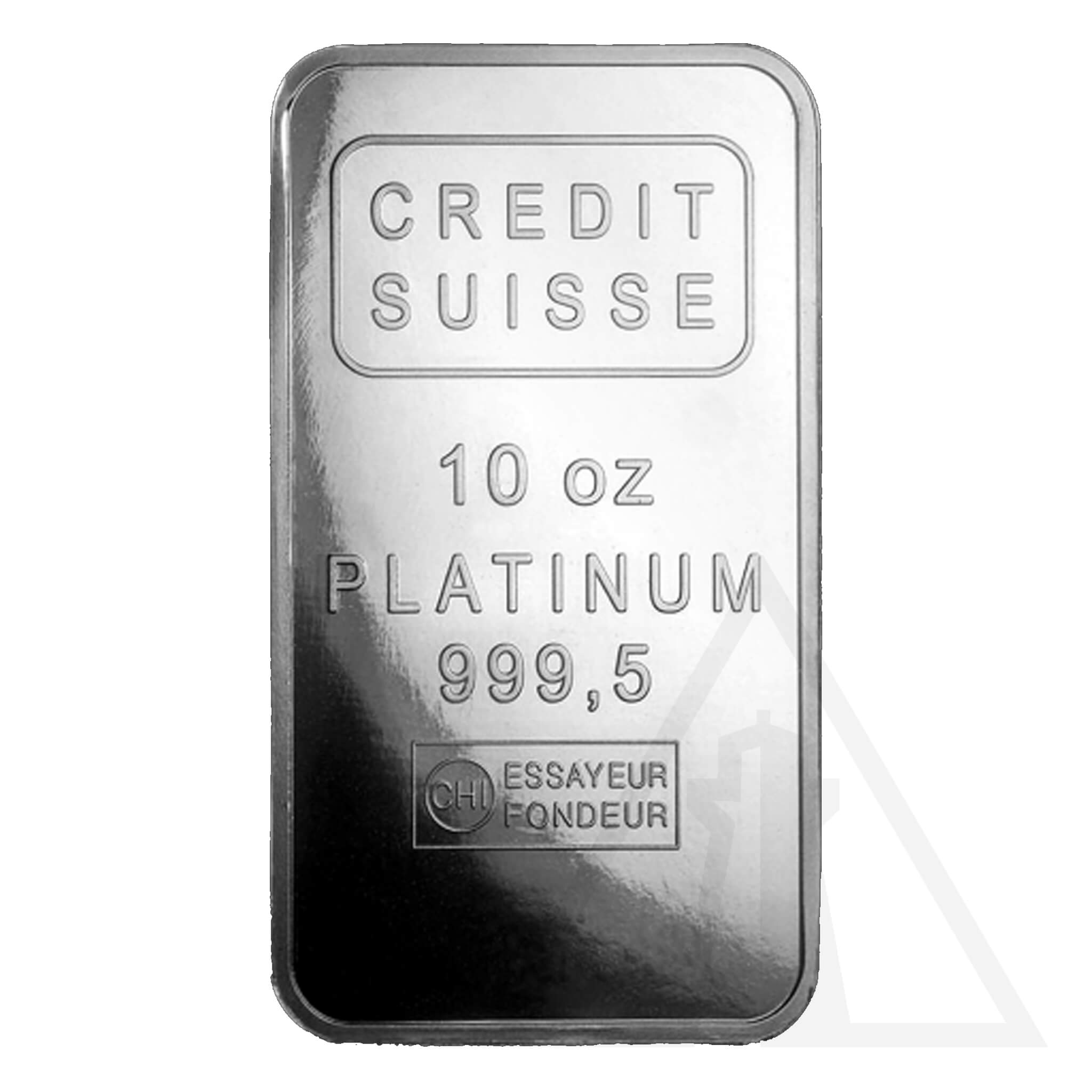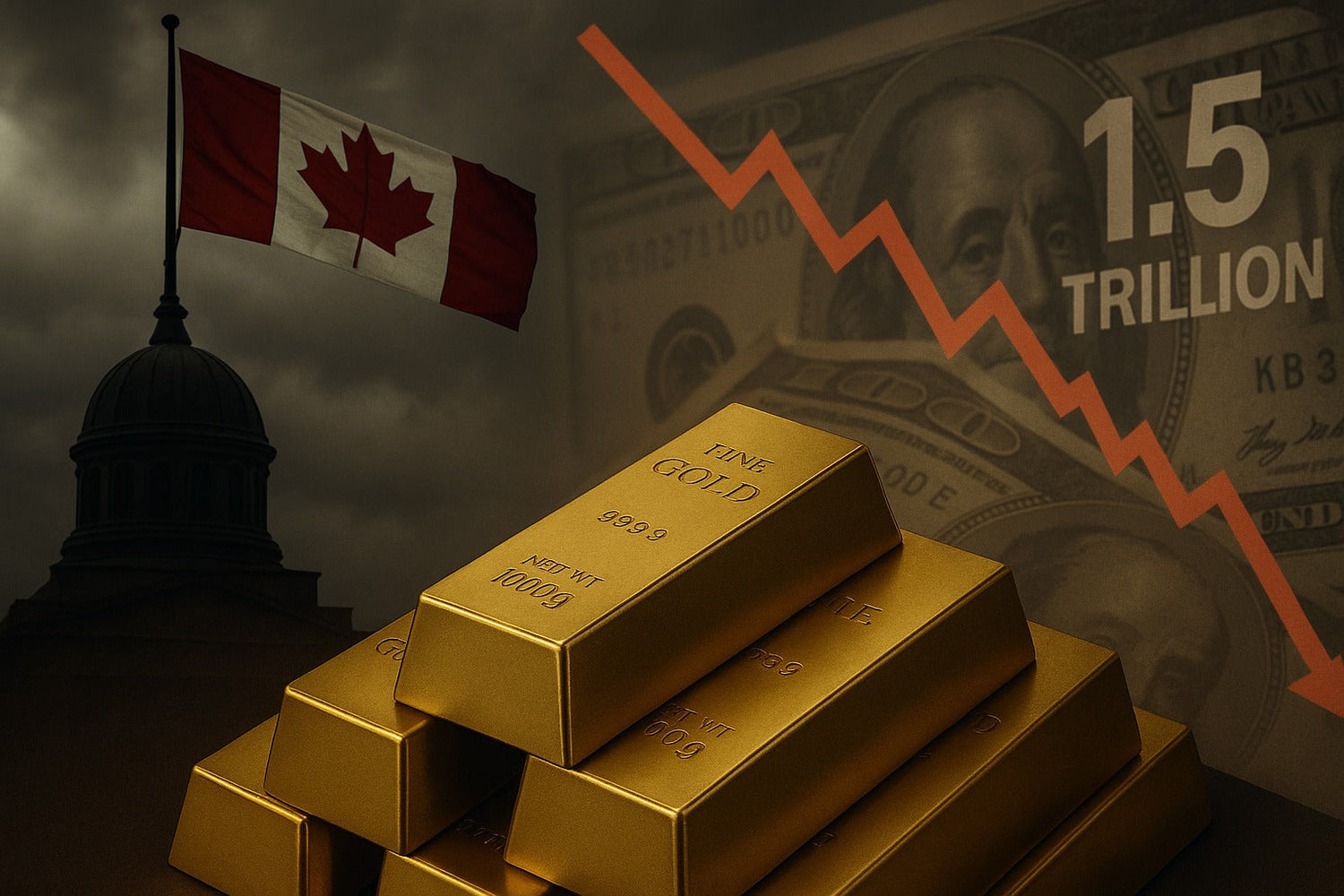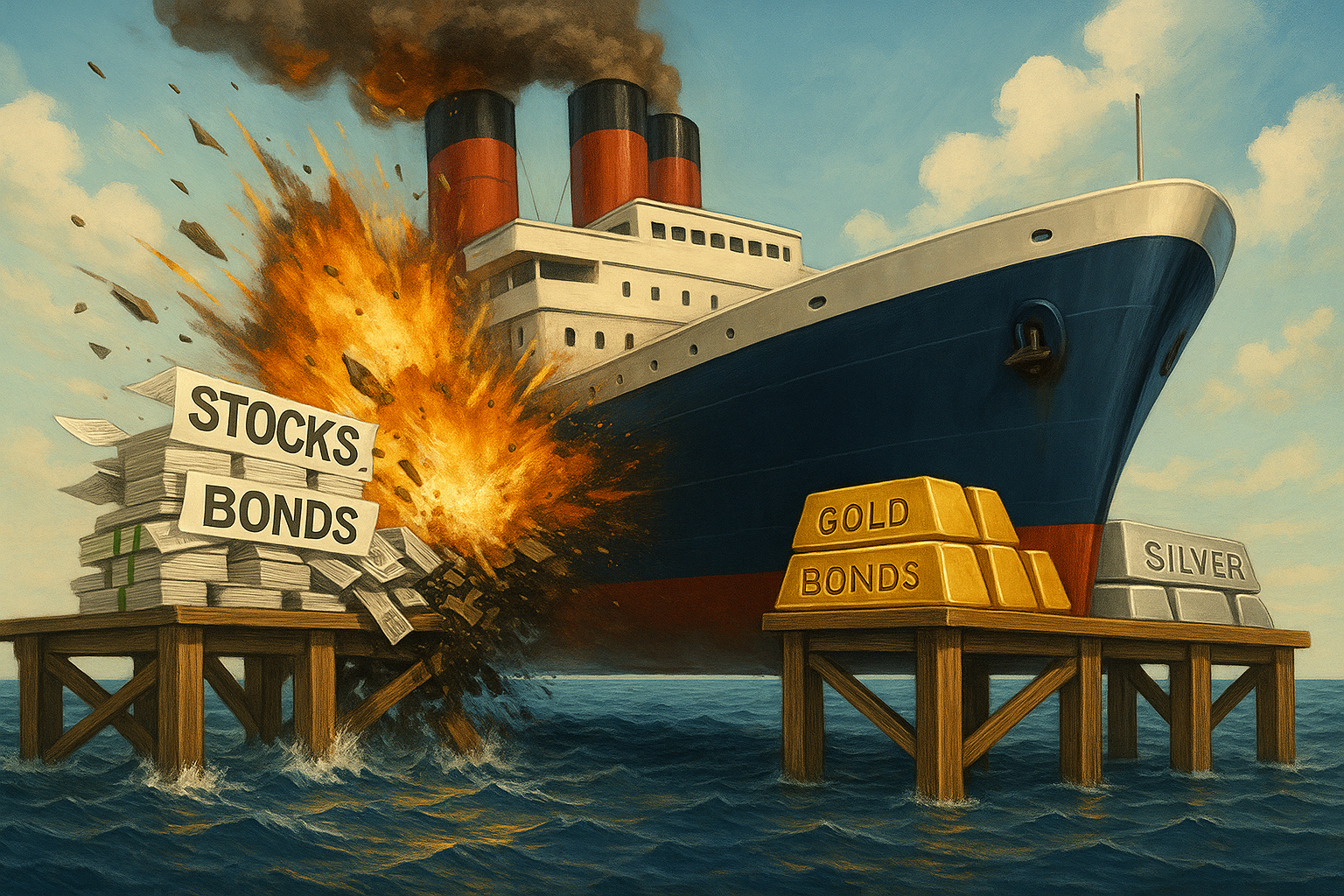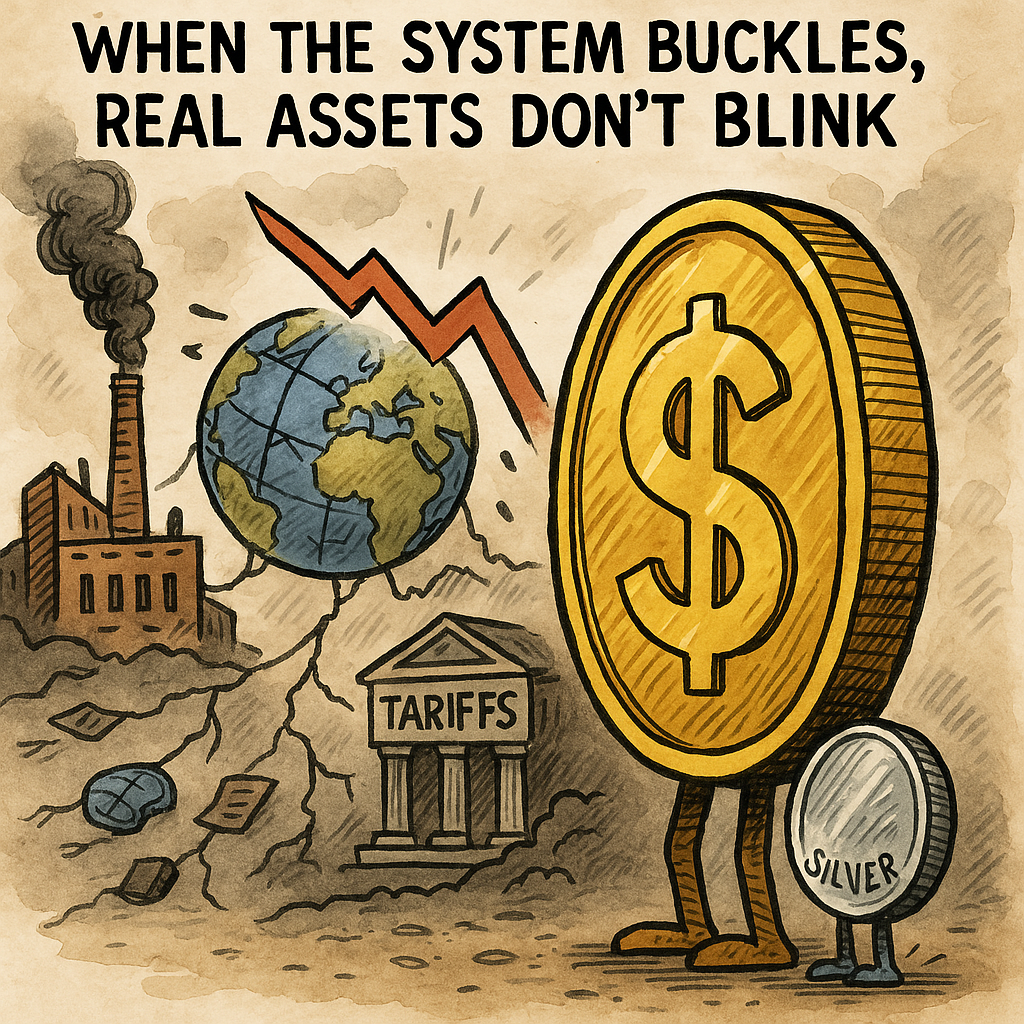There are moments in history when capital doesn't just move; it migrates with intention. These aren't frenzied sell-offs or speculative sprints. They are quiet, deliberate exits—strategic repositioning. And today, the destination of choice is unmistakably gold.
In 2025, the pivot to gold is no longer a contrarian play. It's not simply an inflation hedge or an old-world relic dusted off during crises. It's a consensus signal, a growing declaration across sovereign wealth funds, boardrooms, tech labs, and business communities that trust in governments, central banks, and fiat currency is eroding—not all at once, but steadily, systemically.
And nowhere is this erosion more visible than in Canada.
A Nation Adrift in the Age of Spending Without Growth
Canadians just returned a minority Liberal government to power. While that decision reflects political fragmentation more than clarity, it cements what the next four years will look like under Mark Carney’s stewardship: more spending, less growth, and a deepening detachment from productivity, enterprise, and resource development.
The markets are already pricing in the implications. Net federal spending is expected to rise significantly as the Carney-Trudeau alliance attempts to engineer a high-emission fiscal path while claiming environmental and social progress. But make no mistake—this is not investment-led growth. It’s debt-financed redistribution. And the long-term result will not be prosperity. It will be dependency, fragility, and regional fragmentation.
Alberta is already whispering what many in the West are thinking aloud: separation, or at the very least, economic disengagement. In a confederation where the economic engine is punished, and net contributors are politically alienated, the idea of a unified national economic strategy becomes more fiction than framework.
And amid this backdrop, Canadians are awakening to an uncomfortable truth: cash is no longer king. Gold is. Take a peek. It is happening in all of the world’s major currencies.

In April 2025, gold surged to $3,500 USD, the highest price in recorded history. But this wasn’t the result of speculative trading or crisis-driven panic. This was the reflection of institutional intent.
- Central banks bought over 1,000 metric tons of gold for the third consecutive year, marking modern history's longest sustained accumulation streak. Not since Bretton Woods has gold seen this kind of sovereign endorsement. Central banks have been NET buyers of gold since around 2009.
- China, Poland, Turkey, and India have dramatically increased their reserves. The People’s Bank of China alone now holds over $208 billion worth of gold—its clearest hedge against U.S. dollar exposure and geopolitical disruption.
- ETFs that track gold have flipped from years of outflows to consistent inflows. The shift is less about short-term yield and more about liquidity insulation and currency counterparty risk.
And yet, the most interesting buyer in 2025 might be the one few predicted: technology.
Demand for gold in tech manufacturing rose 7% in 2024, driven by the physical needs of AI hardware and semiconductors. In a perverse twist, the very sector disrupting monetary theory now relies on the most ancient form of money to function.
Canada’s Quiet Collapse: The Anatomy of a Lost Decade
Canada's per capita GDP has grown only 2% since 2015—a flatline compared to the 17% growth in the U.S. over the same period. At the same time, real estate prices have exploded. The cost of housing now consumes over 60% of median income, a level that makes even modest homeownership aspirational, if not impossible. Take a look at these two charts that highlight the above.


This isn't just stagnation. It’s the inversion of the Canadian dream.
- Our fertility rate has plunged to 1.26, now lower than Japan and Italy at the onset of their respective “lost decades.”
- We've added over 5 million new residents since 2015—the equivalent of building a new Montreal, Calgary, Ottawa, and Vancouver without the infrastructure, productivity gains, or housing to support them.
- Productivity growth remains anemic, and resource development, Canada’s historical lever for global competitiveness, has been stifled by policy paralysis and ESG theatrics.
- Our taxes are among the highest in the G20
- Infrastructure projects have been backed up for over a decade, with little hope of being paid for without massive debt spending
· The Liberal government has run deficits yearly since taking office in 2015, even outside of pandemic years. Canada’s federal debt surpassed $1.5 trillion in 2024 and is projected to grow. Under Mark Carney’s proposed leadership, "investing in the future" is code for sustained deficit-financed programs, risking credit downgrades and limiting fiscal room in a crisis.
· Despite rhetoric around "making the rich pay more," bracket creep, carbon taxes, and payroll tax increases (CPP, EI) have raised the effective tax burden on the average Canadian family. Data from the Fraser Institute shows that the average Canadian family now spends more on taxes than on housing, food, and clothing combined.
· Canada ranks near the bottom of the OECD in productivity growth. Federal policies—such as increased regulation, disincentives to invest in resource sectors, and punitive taxes on small businesses—have driven down capital investment and innovation, especially in high-output provinces like Alberta.
· The Liberals have blocked or regulated away critical infrastructure like pipelines (e.g., Northern Gateway, Energy East), leading to billions in lost revenue and jobs. Canada’s oil output is constrained while global demand remains, forcing provinces like Alberta and Saskatchewan to look elsewhere for political autonomy.
· Policies like the carbon tax (imposed even on provinces that opposed it), conditional health transfers, and new housing mandates encroach on provincial jurisdiction. This trend has deepened Western alienation and increased discussions of regional fragmentation, particularly in Alberta.
· With no plan to restore balanced budgets and a reliance on accommodative monetary policy, trust in the Canadian dollar is weakening. As inflation volatility remains a risk, investors and savers may increasingly turn to hard assets like gold, especially as digital currencies and capital controls expand under a more centralized financial vision.
And yet, in the face of this unravelling, we’ve voted for more of the same.
Business Owners: The New Front Line of Financial Sovereignty
In this environment, an unexpected group is emerging as the most innovative and pragmatic cohort of gold buyers: Canadian business owners.
At Delta Harbour, we’re seeing a surge in demand from entrepreneurs and SMB leaders who are no longer content with traditional benefit structures. They’re incorporating gold and silver into employee pensions, retention bonuses, and executive compensation packages—not as a novelty, but as a deliberate act of financial stewardship.
They understand:
- Gold is private wealth. It cannot be digitally frozen, politically redefined, or centrally devalued.
- Gold is durable compensation. Unlike RRSPs or mutual funds tied to market beta, physical metals offer permanence and protection.
- Gold is a competitive advantage. In a labour market where employees crave stability, offering tangible assets signals foresight and trust.
Early feedback from our clients: better retention, greater loyalty, and more engaged conversations around compensation and long-term value. Tangible assets resonate in a world flooded with empty benefits and inflated salaries.
Why This Time Is Different
We’ve seen gold spikes before. 1980. 2008. 2011. 2020. But those were event-driven surges. What makes 2025 unique is that the event never ends. It’s structural.
- Geopolitical volatility is not episodic. It’s entrenched.
- Fiscal irresponsibility is not partisan. It’s systemic.
- Institutional trust is not recovering. It’s deteriorating.
Gold is no longer just the hedge. It’s the thesis. And the honest debate is not whether to own it, but how much you can afford not to.
What Comes Next: Decline, Decentralization… and Decisions
Canada’s next four years will not be about growth. They will be about survival.
We will see further erosion of economic coherence, a likely increase in separatist rhetoric from Western provinces, higher taxes in urban centers to pay for ballooning federal debt, and the creeping realization that fiat currency cannot solve the problems it helped create.
The smartest capital already knows this. That’s why growing portions of it are moving into gold.
At Delta Harbour, we don’t sell speculation. We offer sovereignty. We don’t preach panic. We enable protection. And we don't guess where this is going. We prepare our clients—individuals and businesses alike—for a future where the measure of wealth is not what you’re promised, but what you hold.
In this new era, gold is no longer the asset of last resort. It’s the first principle of real wealth. And it belongs in your wealth strategy, payroll strategy, and future. Talk to us.
Delta Harbour. Own what lasts.
Yours to the penny,
Darren V. Long







